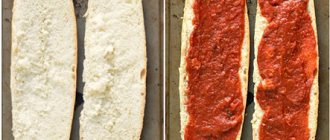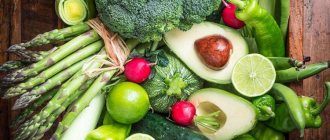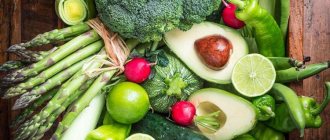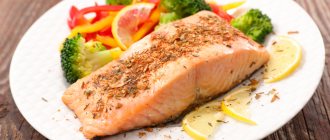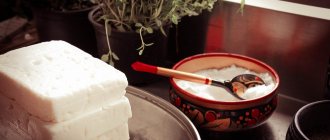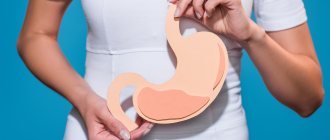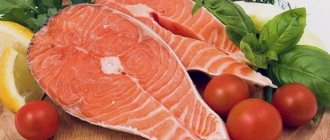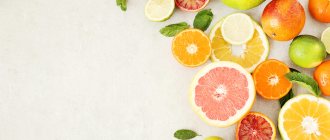What is this substance? Is it beneficial or harmful to the body? What foods contain gluten? Modern buyers have become more literate and when purchasing products they study the labels on the packaging. In this case, attention is paid to the following criteria - the number of calories, the presence of GMOs and gluten content. And if everything is clear with the first two points, then not everyone knows the last definition.
What is this element? What products contain gluten and why is it dangerous?
The role of gluten in human life
In dry form, gluten is a practically colorless powder, tasteless and odorless. When in contact with water, gluten swells, turning into a viscous mass. It has adhesive properties, hence the name of the substance.
On a note! In the food industry, the homogeneous structure of moistened gluten is of greatest value, as it helps achieve a creamy product.
The role of gluten in human life is quite important. This substance is used as:
- natural food preservative;
- natural thickener;
- component for improving the quality of bakery products;
- household glue.
Most often, gluten is used to knead dough when baking flour products. After all, it is gluten that makes the dough viscous and pliable. As a result, the finished product is soft, porous and satisfying. Bread that contains a lot of gluten is considered first-class. In this regard, breeders from all over the world are trying to introduce varieties of cereals with a gluten content of 30%.
What is gluten? Biochemical characteristics
Gluten is a plant protein found in many plants and primarily predominates in grain crops. Together with other proteins that make up plants, it is called gluten. The higher the gluten content in grain flour, the more valuable it is to bakers when making bread.
Gluten is the basis of gluten, and it gave it its name (translated from Latin - gluten, “glue”).
Gluten gives the dough viscosity and elasticity, with its help the dough rises and retains its shape. The quality of bread directly depends on gluten. Plant proteins compensate for protein deficiency in human nutrition, serving as a significant supplement to animal proteins.
According to its physicochemical parameters, gluten is a tasteless viscous mass consisting of 6 types of amino acids, the main of which are gliadin and gluten. In addition, gluten contains carbohydrates, lipids and minerals in small quantities. Its nutritional value is low compared to proteins such as globulin and albumin.
Harmful properties of gluten
Grain products such as wheat, barley and rye have long been known to mankind. Recently, breeders have been working on introducing new varieties of cereals that will be unpretentious, but at the same time will stand out for their high yields. In addition, it is planned that these grains will contain large amounts of gluten, the breakdown of which in the human body forms larger molecules than when consuming products from conventional cereals. And since it is much more difficult for the digestive system to digest them, new varieties of grains will not be very useful for human nutrition.
Thus, a significant amount of gluten requires the body to work hard to break it down. Remains of gluten that have not had time to digest gradually accumulate. This causes dysfunction of the digestive system and causes excess body weight.
If you constantly eat foods containing gluten, inflammatory reactions develop in the intestines and the permeability of its walls increases. Based on this, it is recommended to enrich your diet with gluten-free foods.
Silicon
Silicon is essential for maintaining the elasticity of arteries and plays an important role in the prevention of cardiovascular disease. It reduces the absorption of cholesterol into the blood and reduces atherosclerosis.
The main role of silicon in the body is to participate in chemical reactions in the form of a catalyst, an “energy provider.”
Silicon also affects the conductivity of nerve fibers and is responsible for the normal functioning of the cerebellum, which provides us with good coordination of movements and a sense of balance.
Silicon is also important for strengthening bones, hair and nail growth. It participates in the formation of connective and epithelial tissues and stimulates phagocytosis.
List of foods containing gluten
It is not for nothing that gluten is called “wheat protein”, because it is wheat that breaks records for the content of this substance. A large amount of it is included in products made from flour.
Thus, gluten is found in the following list of foods:
- cereals: wheat, oats, rye, barley;
- plant products from these cereals: bran, semolina, bakery products, pasta;
- compote, lemonade, fruit drink, juice, kvass and other non-alcoholic drinks (not too high gluten content);
- sausages;
- instant porridges and soups - these products use gluten as a thickener;
- breakfast cereals, ready to eat;
- mustard, mayonnaise;
- fast food products;
- candies;
- semi-finished products;
- crab sticks;
- canned products;
- confectionery powders;
- undistilled vodka.
Thus, the list of products containing gluten is quite wide. Gluten is often included in sports nutrition products.
In addition, traces of “wheat protein” are found in the following products:
- salo;
- butter;
- low quality vegetable oil;
- industrially processed nuts and seeds;
- sauces;
- canned vegetables of puree consistency;
- ice cream;
- processed fruits;
- dried fruits and candied fruits.
On a note! Coffee granules contain gluten, which makes the powder more crumbly and soluble. Gluten is also added to cocoa to reduce the cost of chocolate production.
So what can you do to avoid the harm of gluten? In fact, the products from the above lists can and even should be consumed, but not in excess. The diet must be supplemented with gluten-free food.
Cooking recipes
Ground pear has very good culinary qualities. Today, simple and quite affordable recipes for preparing Jerusalem artichoke dishes are very popular:
- Cut the peeled tuber into thin slices and fry a little until half cooked. Place the slices on a baking sheet greased with vegetable oil. Beat the eggs until foamy and add a small amount of cream. Pour beaten eggs and cream over the slices, sprinkle with grated hard cheese. Bake until done. Serve hot with sour cream and herbs;
- It is very easy to prepare a tonic, tasty and very healthy drink from Jerusalem artichoke, which can easily replace morning coffee for people with diabetes. To prepare, pre-cleaned and chopped tuber needs to be poured with boiling water for three to four minutes, after which the water is drained, the mass is dried and lightly fried without oil until golden brown. The raw material, cooled at room temperature, must be brought to a powdery state using a coffee grinder or mortar. The powder is brewed in the same way as regular instant coffee;
- A casserole made from earthen pears and herbs can be a very healthy and tasty breakfast. The washed and peeled tubers need to be grated and simmered a little in olive oil in a saucepan. Mix the resulting mass with spices and aromatic seasonings, add salt, egg and a little warm milk or cream to taste. Place the mixture on a baking sheet and bake in the oven until fully cooked. The casserole is sprinkled with chopped herbs and served hot;
- Another very simple, but nutritious and tasty dish is a light Jerusalem artichoke salad. The washed and peeled tubers need to be grated on a coarse grater, if necessary, remove excess juice, add a sweet and sour apple grated on a coarse grater and grated carrots. You can complement the salad with any greens. Lemon juice or low-fat yogurt is used as a dressing.
Gluten Content Table
Below is a table with a list of products that contain gluten in either explicit or hidden form.
| Products with obvious gluten content | Products with hidden gluten content |
| Pancakes | Mustard |
| Waffles | Baby food (canned) |
| Vermicelli | Chewing gum |
| Granular cottage cheese | Yogurt (with additives) |
| Cupcakes | Cocoa powder |
| Crackers | Sausages |
| Pasta | Canned meat |
| Semolina | Canned vegetables |
| Semi-finished meat products | Canned fish |
| Oats | Cutlets |
| Oatmeal (flakes) | Instant coffee |
| Barley porridge | Crab sticks |
| Cookie | Mayonnaise |
| Cakes | Margarine |
| Wheat, porridge | Ice cream |
| Rye | Dumplings |
| Soy sauce | Beer (as an additive) |
| Drying | Instant chocolate drinks |
| Cakes | Soy sauce |
| Breakfast cereal | Sausages |
| Barley | Processed cheese |
| Barley porridge | Meatballs |
Thus, gluten is found in plant foods and food products in which gluten is added during the manufacturing process as a thickener or for other purposes.
On a note! In the production of beer, gluten is necessarily used, since in this case it acts as a preservative. However, gluten-free drinks, which have been gaining popularity recently, are even more harmful. The fact is that the lack of gluten in it is compensated by flavor enhancers and other harmful substances.
Is it in the following products?
Despite the wide range of products that contain plant protein, people with gluten intolerance can have a very varied diet. To do this, it is important to know which foods contain or do not contain gluten.
In oatmeal
Oats are considered one of the main sources of vegetable protein. It is its presence that gives oatmeal its characteristic viscosity. In stores you can find products with a mark indicating whether oatmeal contains gluten. This is only possible with the artificial removal of gluten from cereals. It is difficult to answer whether all other useful substances are preserved in oatmeal. Any additional processing entails a partial loss of the original properties.
You should avoid eating oatmeal in any form.
In rice
Properly cooked rice dishes are famous for their crumbly texture - this allows you to determine whether the rice contains gluten. If there is vegetable protein in products, such an effect is difficult to achieve.
Products made from rice or rice flour are considered gluten-free. The largest amount of substances beneficial to the body are found in cereals that have not undergone thorough processing: brown and wild rice.
In millet and millet porridge
Millet or millet is another gluten-free representative of the cereal crop. If there are no gluten-containing food additives in the finished dish, there is no doubt whether there is gluten in millet or millet porridge. Millet porridge contains a large amount of fiber, which has a beneficial effect on the functioning of the gastrointestinal tract. When preparing dishes from millet, the cereal should be thoroughly washed, since poorly washed grain can taste bitter due to the oil accumulated in it.
In pearl barley
Pearl barley is obtained by processing barley grains. The method of obtaining this cereal itself determines whether the pearl barley contains gluten. People with gluten intolerance should avoid eating pearl barley.
Spelled
The relationship of this cereal with wheat is responsible for whether spelled contains gluten. But, despite this, the gluten content in spelled is significantly lower than in wheat grains. However, nutritionists do not recommend eating spelled dishes for people with celiac disease.
Boiled spelled
In buckwheat
Buckwheat or buckwheat is considered the safest representative of cereal crops for people prone to allergies. Nutritionists have no doubt about whether buckwheat contains gluten. This product has also proven itself in the field of baby food, as a first complementary food.
In potatoes
In their raw form, potatoes, like any other vegetable, do not contain gluten, just like potato starch. Whether potatoes contain gluten depends on how they are prepared.
Nutritionists recommend excluding industrially produced French fries and potato chips from your diet, since gluten-containing ingredients are often used in their preparation.
In corn
Corn grains have non-allergenic properties similar to buckwheat. Corn porridge is also offered as a first food for children. Whether corn contains gluten depends on how it is cooked. In the absence of gluten-containing products as additives or seasonings, corn dishes are considered gluten-free and hypoallergenic.
In semolina
Semolina is a cereal obtained after processing wheat grains, which determines whether the semolina contains gluten. As with similar grains obtained by processing wheat, those on a gluten-free diet should exclude semolina from their diet.
In bulgur
Bulgur is a cereal made from crushed wheat grains. To obtain bulgur, the wheat is first evaporated and then dried. Since wheat is the main source of gluten, this indicates whether the bulgur contains gluten. If you are gluten intolerant, you should not eat bulgur grain dishes due to the presence of vegetable protein in the composition.
Bulgur porridge
In lentils
Lentils are a herbaceous plant from the legume family. The lack of relationship to gluten-containing cereal plants indicates whether lentils contain gluten. Dishes from such a plant can be included in a gluten-free diet.
In cheese
Most types of cheese are made using pasteurized milk, so there should be no vegetable protein in such products.
Gluten can be used as a thickener in the manufacture of cheese products or processed cheese. You can determine whether cheese contains gluten by studying its composition.
In peas
Peas, as a representative of legumes, do not pose a danger for gluten intolerance. For cooking, use fresh or freshly frozen vegetables. Whether dried or canned peas contain gluten is a rather controversial point.
Dried peas should be thoroughly washed before cooking, as sedimentary particles of flour are possible on the grains due to joint storage in warehouses. Canned peas should be excluded from the diet. When preserving vegetables and fruits, gluten-containing products can be used.
In bananas
Fruits, like vegetables, do not contain gluten. Fresh bananas are safe for people with gluten intolerance. But, since this fruit can cause an allergic reaction, one may doubt whether bananas contain gluten. The presence of vegetable protein is only possible in cooked banana dishes if flour has been added, for example, fried or baked fruit.
In quinoa
Quinoa is a grain crop of the amaranth family. Healthy eating enthusiasts have already determined whether quinoa contains gluten and are using this grain to prepare delicious and healthy dishes. Quinoa (chopped or boiled) is also used as a base for baking. Cereals are safe if you are prone to allergies and gluten intolerance.
Conoa and vegetable salad
In beer
Barley malt is used to make beer, which guarantees the presence of gluten in its composition. Due to the increased demand for gluten-free products, some brewers are releasing products without vegetable protein. Whether beer contains gluten is indicated by a special designation on the label.
Without gluten in beer, the taste of this drink is lost. To preserve the taste, artificial flavors and enhancers are used, which cannot positively affect the quality of the finished product.
Does it contain rye?
Rye is also a source of gluten. The gluten concentration in products containing rye flour is less than in products made from wheat flour. At the same time, there should be no doubt whether rye contains gluten. Any product containing rye flour should be excluded from the diet by those on a gluten-free diet.
Gluten Free Products Chart
There is no gluten in animal products. In addition, it is not found in some types of plant foods. Below is a table with a list of gluten-free products.
| Products of plant origin | Animal products |
| Pea flour | Dairy |
| Buckwheat porridge, buckwheat | Fish |
| Potato | Meat |
| Corn | |
| Dried apricots | |
| Flaxseed flour | |
| Honey | |
| Bean flour | |
| Chickpeas |
Sample gluten-free menu for the week
While following a gluten-free diet, you can consume any permitted foods, in any quantities and at any time.
Gluten-free diet - recipes recommended by nutritionists:
- vegetarian soups (vegetable, mushroom);
- meat broths;
- boiled porridge, potatoes;
- dairy products;
- salads and seafood;
- fresh, boiled or baked vegetables;
- hard-boiled eggs, steam omelettes;
- boiled, stewed or baked meat;
- fruits and berries, jelly;
Monday
- Breakfast: poached fish with mashed potatoes, tea.
- Lunch: light broth, steamed cutlets with rice.
- Afternoon snack: fruit salad.
- Dinner: buckwheat pudding with fresh vegetables.
Tuesday
- Breakfast: boiled meat with buckwheat porridge, tea.
- Lunch: vegetable soup, fruit jelly and fresh vegetables.
- Afternoon snack: baked apple, preferably with nuts.
- Dinner: boiled meat with rice, rosehip infusion.
- Breakfast: corn flakes, cottage cheese, tea or cocoa.
- Lunch: fish soup or fish soup, baked chicken fillet with buckwheat porridge, black tea.
- Afternoon snack: rice bread with jam, tea.
- Dinner: vegetable stew, gluten-free bread, kefir.
Thursday
- Breakfast: light omelet, cheese, tea.
- Lunch: broth, celery and apple salad, juice.
- Afternoon snack: fruit jelly and compote.
- Dinner: buckwheat pudding with vegetable side dish, green tea.
Friday
- Breakfast: cottage cheese enriched with calcium, baked apple, tea.
- Lunch: steamed cutlets with milk sauce, meat broth.
- Afternoon snack: fruit.
- Dinner: steamed fish cutlets with mashed potatoes, juice.
Saturday
- Breakfast: poached fish with rice, coffee.
- Lunch: broth with meatballs, baked vegetables, tea.
- Afternoon snack: gingerbread with nuts and apples.
- Dinner: boiled meat with buckwheat porridge, kefir.
Sunday
- Breakfast: fruit, cottage cheese, tea or juice.
- Lunch: meat broth, pilaf, vegetable salad, juice.
- Afternoon snack: fruit jelly.
- Dinner: buckwheat pudding, vegetables, tea.
1 day
- Breakfast: cottage cheese dessert with natural fruits, honey, rice cakes, natural cocoa.
- Lunch: baked fish with herbs, mashed potatoes, green salad, berry compote.
- Afternoon snack: lean corn flour bun, natural jam, natural coffee with milk.
- Dinner: millet porridge, kefir.
Day 2
- Breakfast: rice porridge with fresh berries, almond flour bun, natural coffee with milk.
- Lunch: meat borscht or cabbage soup.
- Afternoon snack: rice or cornbread, fruit salad.
- Dinner: buckwheat porridge with goat milk, soy bread.
Day 3
- Breakfast: cheese omelet, corn tortilla, cocoa.
- Lunch: chicken broth, buckwheat pancakes with meat.
- Afternoon snack: banana, tea.
- Dinner: stewed vegetables with sour cream, freshly squeezed juice.
4 day
- Breakfast: corn flakes with milk.
- Lunch: fish soup with boiled egg, stewed beans.
- Afternoon snack: baked apple with nuts.
- Dinner: cottage cheese casserole with rice flour, tea.
5 day
- Breakfast: pancakes made from a mixture of rice and corn flour, cocoa.
- Lunch: creamed cheese and spinach soup, tomato and cucumber salad, boiled breast.
- Afternoon snack: boiled egg, berry juice.
- Dinner: Baked vegetables with cheese, tea.
Day 6
- Breakfast: rice and boiled fish, tea with milk.
- Lunch: meat broth and meatballs, steamed vegetables.
- Afternoon snack: fruit juice jelly, buckwheat bread.
- Dinner: buckwheat porridge and boiled meat, tea.
- Breakfast: low-fat cottage cheese, cocoa.
- Lunch: vegetable soup, baked fish in milk sauce.
- Afternoon snack: muesli of nuts, apple and rice flakes, tea.
- Dinner: vegetable stew
Gluten free diet for weight loss
Recently, show business stars are simply obsessed with the newfangled gluten-free diet, which helps to lose weight. There are even admiring reviews from celebrities showing off their curves. A gluten-free diet involves limiting foods containing gluten, and more restrictive types of diets completely exclude such foods. Among doctors there are also supporters and opponents of such nutrition.
Undoubtedly, a gluten-free diet has certain advantages:
- reduces the amount of high-calorie foods in the diet - foods with gluten contain many calories;
- increases the amount of vegetables in the diet - vegetables are loaded with vitamins and other beneficial components, and are also a source of healthy fiber;
- contributes to the health of the human body.
Opponents of the gluten-free diet criticize this approach to nutrition. In their opinion, products containing gluten provide the human body with important components, so they should not be completely excluded from the diet. In addition, the quality of food is also important. If it is natural, then the gluten content in it will not harm your health. If, in addition to gluten, it contains preservatives and dyes, it should not be eaten.
On a note!
According to scientists, many manufacturers include flavors, sugar, fat and other substances in their products to compensate for the lack of gluten. In fact, such products, although gluten-free, pose a greater danger to the human body than foods containing gluten, and contribute to the accumulation of fat deposits. READ OTHER INTERESTING ARTICLES ON THE TOPIC
- Why take Omega-3?
- What is gluten?
- Gluten Free Products
Gluten and a healthy lifestyle
As noted above, gluten contained in popular food products causes an addictive problem. The more we consume ready-made baked goods, flour products, canned foods and semi-finished products, the more we want to consume them. In pursuit of taste qualities that are provided by chemical additives, we often forget about the benefits of our diet. Many foods and dishes do not have the necessary balance of nutrients.
The basis of a healthy diet is the consumption of balanced foods, as natural as possible and not exceeding the permissible calorie allowance per day. There is no need to exclude products with gluten unless absolutely necessary, because they bring not only harm, but also benefit. Nutritionists recommend gluten in cereals (fresh cereals and cereal muesli). Incredibly, in a healthy body gluten is capable of:
- regulate the functioning of the gastrointestinal tract;
- saturate cells and tissues with vitamins and minerals;
- participate in regeneration and strengthen the immune system;
- strengthen bone tissue;
- normalize hemoglobin levels.
So, we figured out what gluten is, how harmful it is and in what cases it can be useful. You should not get carried away with gluten products, and if you have any doubts or health problems, you should definitely consult with an allergist and nutritionist.
The materials posted on this page are informational in nature and intended for educational purposes. Site visitors should not use them as medical advice. Determining the diagnosis and choosing a treatment method remains the exclusive prerogative of your attending physician! The company is not responsible for possible negative consequences arising from the use of information posted on the website womplanet.ru
Personal data privacy policy User Agreement
Gluten intolerance in children
If a child’s body is intolerant to gluten, the child should stop eating foods containing it.
On a note! Children at an early age often experience gluten intolerance, which is associated with an insufficiently mature digestive system. That is why modern pediatricians strongly recommend introducing gluten-free products into a child’s complementary foods first.
Gluten intolerance (celiac disease) is manifested by allergic reactions. The disease is temporary or permanent. In the first case, you will have to give up foods containing gluten for a certain period, and in the second, you will have to stick to diets for the rest of your life.
In general, parents of children with celiac disease should adhere to the following recommendations:
- separate a cabinet for storing gluten-free products;
- Prepare food for a child using separate utensils;
- Wash your hands regularly, especially before handling gluten-free products, to avoid accidentally introducing gluten onto them;
- It is prohibited to use the same oven for simultaneous baking of gluten-containing and gluten-free dishes;
- there is no need to listen to the advice of other parents whose children also suffer from gluten intolerance regarding the safety of a certain product, each body is individual;
- it is better to put prohibited products in a place inaccessible to the patient;
- if a new product is introduced, on the same day it is forbidden to give another type of food that is unfamiliar to the child’s body.
On a note! Scientists agree that celiac disease is inherited. That is, if one of the parents has this disease, the probability of it affecting the child is 50%.
Gluten intolerance, which is permanent, cannot be completely cured, but unpleasant symptoms can be avoided if you follow a gluten-free diet throughout your life.
Fats and oils
These products do not contain gluten. The exception is wheat germ oil, since it is produced from a grain containing gluten.
All other types of vegetable and animal oils are safe for celiac disease.
The most common products:
- Olive oil. Add it to sauces or salads, since heat treatment reduces the amount of nutrients. The smoke point of unrefined olive oil is 210 °C - higher than that of sunflower oil. This means it is safe to fry with.
- Unrefined sunflower oil is especially useful. During frying, you need to make sure that it does not smoke and cannot be reused.
- Corn oil promotes healing of the intestinal mucosa. Due to its short shelf life, the product should be used within a month.
- Rapeseed oil has a beneficial effect on the small intestine. It surpasses even olive oil in its beneficial qualities. Strengthens digestion due to its choleretic effect.
Daily gluten intake for adults and children
The human body's need for proteins is determined by the need to establish a balance of nitrogen, which is constantly lost during the metabolic process. A lack of protein food invariably leads to the fact that the body is forced to break down its own protein to maintain balance, which negatively affects the functioning of internal organs.
The consumption rate depends on gender, age, type of activity and the state of the external environment in places of residence. The bulk of the protein consumed should be of animal origin.
List of foods containing gluten
Plant proteins supplement the daily requirement and are represented in the diet of most people by gluten contained in bread, pasta, bakery and confectionery products, and meat products. The list of gluten-containing products goes on.
The table below shows the daily consumption rates for different categories of adults and children:
| Category of population by occupation | Age parameters | Daily protein requirement, g | |||
| Men | Women | ||||
| Total proteins | Including plant | Total proteins | Including plant | ||
Knowledge workers | 18-40 40-60 | 96 89 | 38 36 | 82 75 | 33 30 |
| Workers with low physical activity | 18-40 40-60 | 99 92 | 45 42 | 84 77 | 38 34 |
| Workers with average physical load | 18-40 40-60 | 102 93 | 46 42 | 86 79 | 39 35 |
| Heavy physical workers labor | 18-40 40-60 | 108 100 | 54 50 | 92 85 | 46 43 |
| Unemployed older people | 60-70 Over 70 | 80 75 | 32 30 | 71 68 | 28 27 |
| Students | — | 113 | 45 | 96 | 38 |
| Athletes during competitions | — | 154-171 | 77-85 | 120-137 | 60-68 |
| Women expecting a baby | — | — | — | 109 | 44 |
| Nursing mothers | — | — | — | 120 | 48 |
| Babies | 0,5-1 1-1,5 1,5-2 | 25 48 53 | 5 -0 12 13 | ||
| Preschool children | 3-4 5-6 | 63 72 | 19 25 | ||
| Children of primary school age | 7-10 | 80 | 32 | ||
| Children Wed. school age | 11-13 | 96 | 38 | ||
| Teenagers of high school age | 14 -17 | 106 | 42 | 93 | 37 |


